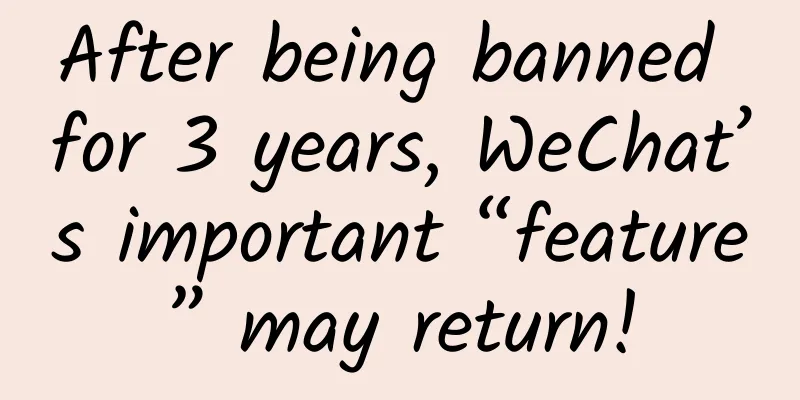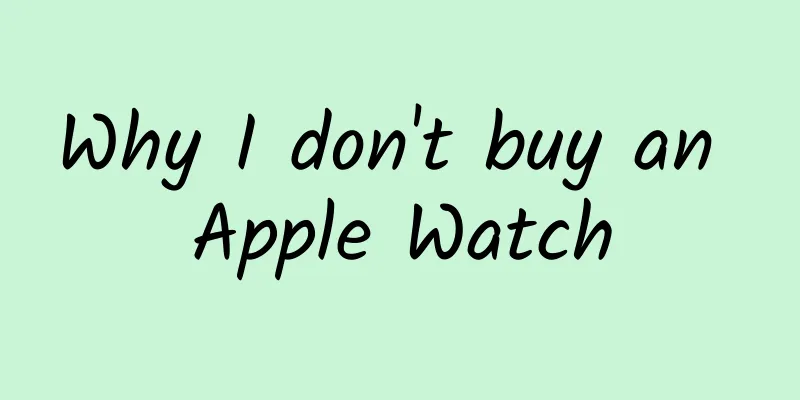After being banned for 3 years, WeChat’s important “feature” may return!

|
Recently, according to feedback from some iOS users, WeChat is currently testing some new features, including a feature that disappeared three years ago: “Answer voice calls with the system phone.” Currently, this feature is still in the grayscale testing stage and is only available to some users of iOS version WeChat 8.0.6 or 8.0.7 and above. A “new” feature that appeared three years ago Leifeng.com learned that based on the "answer voice calls with system phone" function, users can answer WeChat voice calls on the lock screen interface, just like answering a phone call directly. In addition, WeChat calls will also be recorded in the voice call history. Click on the record to jump to WeChat and call back. Currently, this feature is only open for testing to some users. Users can go to "WeChat > Me > Settings > New Message Notifications" and check whether the "Answer voice calls with system phone" item appears in the menu to determine whether it is within the test scope. It is worth mentioning that in addition to the "answer voice calls with system phone" function, WeChat has also recently optimized the transfer function, allowing users to transfer money directly to a single group member in a group chat - click the "+" on the chat box, click the transfer item and then select the recipient without having to add friends again. In fact, the "answer voice calls with system phone" feature appeared as early as WeChat version 6.6.0. At that time, WeChat was adapted based on CallKit launched by Apple on iOS 10, and WeChat voice was no different from the operator's call function. Not only that, CallKit supports Bluetooth control and CarPlay. Users can answer WeChat calls directly through Bluetooth headphones or CarPlay while driving without jumping into the WeChat app. However, this feature was removed from the shelves shortly after its launch. At that time, Apple issued a statement saying that at the request of China's Ministry of Industry and Information Technology, the CallKit function must be turned off in all applications in the Chinese App Store. If the developer's application currently includes the CallKit function, it needs to submit an update and delete the function. Since then, CallKit has become history in China. WeChat is currently testing the function of "answering voice calls with the system phone", which may also mean that Apple's "CallKit" function is about to return. In this regard, some people pointed out that if the "answer voice calls with system phone" function returns, a "new" war may break out between WeChat and operators. In fact, since the launch of WeChat, there has always been a delicate relationship between operators and WeChat. In the early days of WeChat, it competed with China Mobile's Fetion, and the result was not hard to predict: WeChat gradually became a national application, while Fetion was losing ground. Later, as WeChat continued to grow, the three major operators became "pipeline" entities, helping to connect WeChat with users. In recent years, the three major operators have been moving towards cooperation, especially with the arrival of 5G, the operators began to jointly deploy the "5G message" service, which is regarded by the outside world as "WeChat's biggest competitor." The three major operators counterattack On April 8, 2020, the three major operators released the "5G Message White Paper" and launched the "5G Message" service - this is a basic telecommunications service of the operator, upgraded based on the SMS service. Compared with traditional SMS, the upgrade of 5G messaging lies in RCS (Rich Communication Services & Suite, RCS for short). RCS is the international standard for the next-generation messaging service. The information service platform built on it can make "information as platform, user as customer, and mobile phone as application" a reality. The 5G messaging business mainly includes two aspects: one is the messages exchanged between individual users (including point-to-point messages, group messages and group chat messages); the other is the messages exchanged between industry customers and individual users. Let’s look at them separately: For individual users, 5G messages will break the traditional SMS format of 140 bytes of text for each message. The content will also break the limitations of text and realize the integration of various rich media information such as text, pictures, audio, video, location, file transfer, etc. For enterprises, 5G messages will provide them with an information interaction interface with individual users. Enterprises can provide personalized services and consultations to users through rich media, such as air ticket and hotel reservation inquiries, logistics inquiries, online shopping order inquiries, etc. In addition, users can also realize one-stop business experience such as search, interaction, sharing and payment in the message window. In short, most of the functions that users can currently operate on WeChat can also be realized in 5G messages. It is worth mentioning that since the release of 5G news, 11 terminal manufacturers including ZTE, Huawei, Xiaomi, and OV have also actively expressed their support. At that time, some public opinion believed that 5G messages were actually an attack launched by the three major operators on WeChat. Some even believed that 5G messages were a "revenge" of the operators to regain the voice and SMS revenue that had been robbed. In this regard, China Unicom's independent director Lu Tingjie once pointed out in an interview that 5G messages cannot completely replace WeChat, but they can provide some differentiated functions to solve pain points that WeChat cannot solve. Social platforms may become more social, and specific industry applications may run on 5G messages. Although the public opinion is somewhat exaggerated, to a certain extent, this also reflects the competitive and cooperative relationship between WeChat and operators. Whether it is WeChat's re-introduction of the "answer voice calls with system phone" function or the three major operators launching "5G messages", they are actually testing each other in their own territories. How the war will ultimately unfold will also depend on the offensive postures of both sides. |
<<: Some Android manufacturers kill background processes too aggressively, Google is investigating
>>: Apple releases iOS and iPadOS 12.5.4 updates for older devices
Recommend
360 Points Promotion Tutorial [Detailed Lecture]
Learn to master: Learn the relevant knowledge of ...
How to welcome the New Year safely? Please take these health tips
New Year's Day is coming, how do you plan to ...
How to become a Douyin Blue V agent, how much does it cost and what are the conditions?
Recently, many people have added Feng Chao to inq...
When will household solar power generation say goodbye to “polarization”?
Recently, there have been frequent news reports o...
Runtime things (message mechanism)
[[163324]] 1. About runtime I have used runtime t...
There are so many online promotion channels, which one is suitable for us?
I still remember when I first entered the industr...
List of key epidemic areas in Shanghai in 2022: Which specific communities are under closed management? Attached is the latest list!
In order to end this round of local epidemic as s...
In the competition for special drugs for COVID-19, which “players” stand out?
The new coronavirus pandemic is not over yet. In ...
How much does it cost to invest in Nanchong’s marriage and love mini program?
How much is the investment cost for Nanchong Marr...
Xiaomi and Midea aim at the 100 billion US dollar smart home market
On the evening of December 14, Xiaomi and Midea G...
Where did the sunflower, which is full of treasures, come from? Its domestication history began 3,000 years ago
As an ancient snack, sunflower seeds are widely l...
Recently, it has been a high incidence! Someone was suddenly "slashed" while riding a bicycle? The "culprit" turned out to be a common spring activity...
In March, the spring breeze is like smoke, the te...
How much does it cost to create a bargaining app in Hailar?
The factors that affect the quotation produced by...
Goo Hara's mother will donate part of her inheritance and explain the reason for leaving home. Netizens question whether this is true?
On the JTBC current affairs program "Lee Kyu...
Bai Zhiyong After Effects Full Case System Tutorial
: : : : : : : : : : : : : : : : : : : : : : : : : ...









